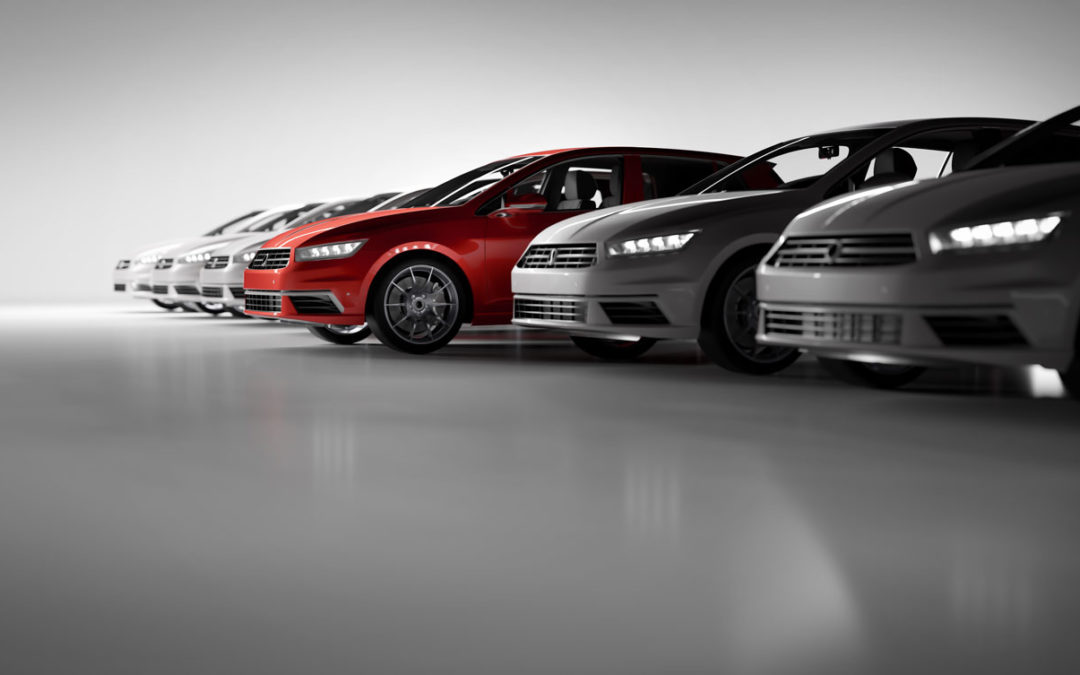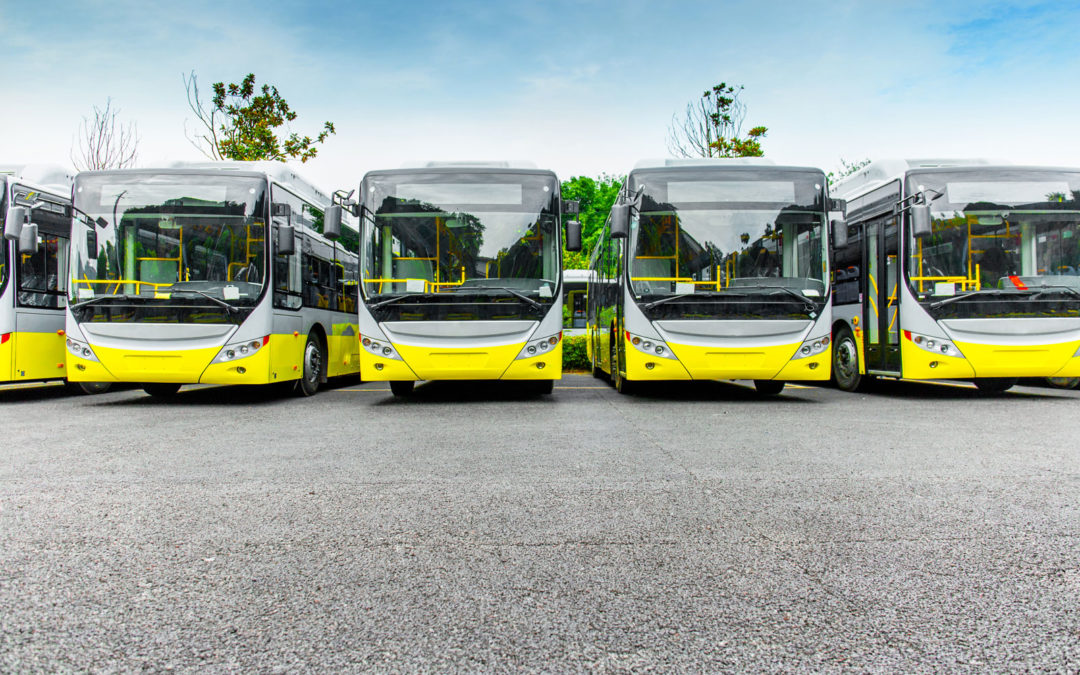
by Peyton David | Sep 29, 2020 | Electric Vehicles
National Drive Electric Week, celebrated from September 26 to October 4, is a 9-day long event raising awareness about the environmental and social benefits of driving all-electric and plug-in hybrid cars. In its tenth annual commemoration, National Drive Electric Week events will include webinars ranging from topics on how to get started with an electric vehicle (EV) to making ownership more inclusive.
RENEW Wisconsin, in partnership with Wisconsin Clean Cities, will be hosting the fourth and final webinar of our Virtual Electric Series on September 30 from 1:00PM to 2:00PM. The Local Utilities & Infrastructure Webinar will feature utility experts as they talk about incentives and programs offered to help Wisconsinites drive electric.
Why Drive Electric?
From 2017 to 2018, EV sales grew 80% across the nation, with a total of 1.18 million EVs on the road by the end of March 2019. Wisconsinites drive electric vehicles for many reasons, some cite the safety and speed and others love the efficiency and environmental benefits of EVs.
For Madison resident Matthew Ploeger, driving an EV means having the perfect car for a road trip. Ploeger, who owns both a Tesla Model S and a plug-in hybrid Chevy Volt, said he particularly enjoys the safety features of his Tesla, as well as the smooth and quick acceleration.
“I love being able to drive the Tesla … and make use of the supercharger network, which makes a road trip fantastic,” Ploeger said. “We can go for 180 to 200 miles, stop for 25 to 30 minutes to charge, stretch our legs, get something to drink, and then we’re back on the road in 30 minutes with 80% charge and we go another 175 to 190 miles.”
Echoing that sentiment, Bayfield resident Roger Aiken enjoys driving his roomy all-electric Chevy Bolt, which he says is an ideal way of travelling with his two labradors and his wife, Susan. Pre-COVID, he drove 20,000 miles a year, getting 107 electric miles per gallon.
Living in a hilly neighborhood, Aiken has found that his EV drives more efficiently than a gas powered car, as his car generates electricity as it’s going downhill, so that he can use that energy for driving uphill.
EVs are efficient, especially when powered by the sun
Madisonite David Brow says his all-electric Tesla Model S is easy to maintain and fun to drive. He and his wife chose to drive electric for the environmental benefits. Brow has solar panels on his home, which means his car is powered by the sun! Solar powered EVs minimize emissions and create a cheap way to produce energy. Even without access to renewable energy, EVs don’t produce any tailpipe emissions, limiting the amount of smog-forming pollutants in the air and having a positive effect on human health.
Similarly, Lee Gasper-Galvin of Sun Prairie cites her vehicle’s efficiency as a primary reason why she chose to drive electric.
“I drive electric because electric vehicles are much more efficient than internal combustion engine vehicles,” Gasper-Galvin said. “For example, this Tesla Model 3 has a 95% efficient electric motor, as compared to an internal combustion engine vehicle, which is only 20-30% efficient.”
Other ways to ride
Choosing to drive a car is not the only way to drive electric.
Jim Holmes, a Marshall resident, rides an electric motorcycle and an electric lawnmower. He said his electric motorcycle is his preferred way to ride, as it is low-maintenance and can go 90 miles per one full charge.
Holmes chose to invest in an electric lawnmower not only because of the convenience of not having to get gas, but also because of the added environmental benefit.
Whatever you choose to drive, EVs have a plethora of individual and environmental benefits, such as savings on fuel and maintenance costs, and reduced emissions and cleaner air. EVs are becoming increasingly popular, and driving electric has never been easier. EVs are becoming increasingly popular, and driving electric has never been easier. For more information, visit renewwisconsin.org/electric-vehicles.

by Jane McCurry | Sep 11, 2020 | Electric Vehicles
UPDATE: Racine is set to get 2 additional new electric buses for a total of 8! Racine is leading the pack in investing in electric buses. The second round of Wisconsin’s Volkswagen Mitigation Program Transit Capital Assistance Grants were announced on September 9, 2020. This round, totaling $18 million, was awarded to Beloit, Wausau, Sheboygan, Madison, Eau Claire, Racine, Green Bay, and La Crosse. The funding will allow those cities to purchase a combined 34 transit buses.
Racine is again the only city that has opted for electric buses, getting funding for 2 more electric buses and the infrastructure to re-charge them. With this additional funding, Racine will be able to purchase 8 all-electric transit buses with Volkswagen Mitigation Program funding.
Between the first and second rounds of the Transit Capital Assistance grants, the Volkswagen Settlement Program has spent $50 million to bolster the State’s public transit systems. The total funding available to Wisconsin through the Volkswagen Settlement is $67.2 million, which leaves about $17 million yet to be awarded.
Published December 14, 2018
Racine is set to get 6 new electric buses!
The RENEW Wisconsin Volkswagen Settlement Blog reviews the Volkswagen Settlement and how Wisconsin allocated two-thirds of our settlement funding. A large portion of the funding is going to the Transit Capital Assistance Program for cities and counties to replace aging diesel buses.
Transit Capital Assistance Grant Recipients
The grant recipients have been announced! $32 million of settlement funding is set to replace a total of 58 polluting diesel buses in 9 cities and 1 county.
At least 6 of those buses will be electric, all in Racine. Appleton, Eau Caire, Green Bay, Janesville, La Crosse, Madison, Milwaukee County, Sheboygan, and Wausau are also award recipients.
Per the award announcement, Racine is set to receive $6.2 million for the 6 buses and overnight charging stations. Racine also wanted to install a fast charger toward the end of the route out to the “Wisconn Valley.” The awards aren’t yet final, giving parties time to negotiate grant terms.
Racine’s Electric Buses
Racine’s application states, “the new buses will attract commuters by providing a quiet, high tech experience commensurate with the new economic opportunities and technologies in the service area.” Of course, by “new economic opportunities and technologies,” they are referring to Foxconn. Which makes sense – a key aspect of the competitive grant program was to connect employees to employers. Foxconn voiced their support by signing on to Racine’s application.
It will likely be more than a year before the new buses are operating. Once they are in operation, the new electric buses will replace the oldest, most polluting, diesel buses in Racine’s fleet.
Benefits of Electric Buses
No matter where they operate, electric buses are a win for all stakeholders.
- There’s no diesel smell and no loud engine. Electric buses are more comfortable to ride in!
- Electric buses are cheaper to operate. Lower fuel costs and less maintenance means extremely reduced costs to operate.
- Fewer emissions mean a cleaner community for everyone. Whether you are a bus rider or not, everyone will benefit from the reduced emissions from switching to electric buses.
- Clean, electric buses can be powered by renewable energy. We can create the energy to run our transit right here in Wisconsin instead of sending billions of dollars out of state for fossil fuels.
I’m excited to see more electric buses being added to transit fleets in Wisconsin. They truly are a win for all transportation stakeholders – the riders, owners, and community at large.
by Jane McCurry | Jul 10, 2020 | Electric Vehicles, Policy
This morning, the Wisconsin Supreme Court ruled that three of Governor Evers’ budget vetoes are unconstitutional. Included in the three budget vetoes was the allocation of $10 million of Volkswagen Settlement Funding for electric vehicle charging infrastructure. RENEW has been working with partners and the Department of Administration to determine the most effective use of this $10 million since the state budget passed last July.
We are extremely disappointed with this setback. We had hoped to see this money spent over the next year to build a comprehensive network of charging infrastructure that would allow Wisconsinites to easily and confidently drive anywhere in the state with an electric vehicle.
There is a silver lining: Volkswagen Settlement Funds are strictly allocated based on a federal settlement that stipulates this funding must be spent to reduce diesel and gasoline emissions. RENEW will continue to fight to ensure this money is reallocated to electric vehicle charging infrastructure, as we believe this is the best way to support the transition to a clean, homegrown transportation system.
For more information, see RENEW Wisconsin’s previous blogs about Volkswagen Settlement Funding:
July 3, 2019 • Governor Evers Signs Budget Designating VW Money to Electric Vehicle Charging Stations
May 31, 2019 • Electric Charging Station Funding Takes Another Ste
March 6, 2019 • Volkswagen Settlement Update
October 22, 2018 • The “Volkswagen Settlement” – A Big Opportunity for Electric Vehicles
by Jane McCurry | Jun 24, 2020 | Electric Vehicles, Programs, Public Service Commission, Utilities
On Thursday, June 18th the Wisconsin Public Service Commission (PSC) unanimously approved Xcel Energy’s three pioneering electric vehicle (EV) programs. Xcel, whose western Wisconsin service territory includes Eau Claire, La Crosse and Ashland, proposed two residential programs in addition to a commercial pilot program, all intended to reduce the upfront cost of installing electric vehicle charging infrastructure. These programs will make it easier and more affordable for individuals and businesses to install electric vehicle chargers and commit to driving electric.
In 2014, Madison Gas & Electric’s Charge@Home electric vehicle pilot program was approved by the PSC. Charge@Home launched in 2016, and like Xcel’s programs, it aims to help with the obstacles of EV adoption. Xcel’s two residential programs mark the first time a full-fledged electric vehicle program has been approved in Wisconsin.
Residential Programs
Under both of the residential programs, Xcel will install and maintain ownership of a level 2 charger on the customer’s property, provided the customer owns an electric vehicle. Customers will have the option of paying more upfront coupled with a lower monthly fee through their “pre-pay” option, or taking a “bundled” approach and paying more per month while foregoing the upfront charge. While customers will end up paying back the cost of the system over time, Xcel’s ownership of the charger means the expense of upkeep and replacement (if necessary) will be paid for by Xcel.
Under one of the programs, the electric vehicle charger will meter the electricity used to charge the car, which will be billed on its own EV-only time-of-use rate.* This means that customers can take advantage of the cost savings of charging their EV using inexpensive electricity overnight without having to switch their whole house to a time-of-use rate or install a second meter.
The second residential program is for customers who have on-site solar generation or who already use a time-of-use rate. This program is patterned after the first, except that the electric vehicle charging will not be put on its own rate. The whole home, including the EV charging, will be billed at Xcel’s existing residential time-of-use rate.
Commercial Pilot Program
Xcel will also run a commercial electric vehicle pilot program. In this pilot, Xcel will be studying an alternative to current line extension* rules. The utility will help customers finance the cost of make-ready infrastructure* needed for EV charging stations, which includes all necessary electrical equipment to operate the stations. Customers will pay the utility back over time as they use more electricity to charge their cars. The commercial customer would also have the option of letting Xcel own the charging stations, not just the make-ready, in which case the customer would pay an additional monthly fixed fee. These options will help commercial customers bring down what can sometimes be a very high upfront cost to install make-ready and charging infrastructure.
It can be expensive to install the equipment needed to recharge electric vehicle batteries, especially in commercial settings. We commend Xcel for finding creative solutions to some of the upfront cost barriers to electric vehicle ownership and deployment. These programs give Wisconsin customers more options for affordable electric vehicle charging and we’re excited to see the PSC approve them.
LINE EXTENSION • When the utility needs to add new electrical infrastructure to get electricity to a customer meter, it’s called a line extension. There are costs associated with adding this infrastructure, and approved formulas that help the utility calculate which costs the customer will pay.
MAKE-READY INFRASTRUCTURE • All of the electrical equipment up to (but not including) the EV charger. This includes wiring, conduit, electrical panel upgrades, and any other equipment or upgrades that are needed to place a functioning EV charger in the location.
TIME-OF-USE RATE • A time of use rate means that the amount you pay for electricity changes depending on the hour of the day and the day of the week. Typically, that means you pay more during daytime hours on weekdays, when it’s more expensive for the utility to generate and deliver that power, and less at night and on weekends, when the cost of supplying electricity to customers is significantly lower.

by Jim Boullion | Jun 22, 2020 | Action Alert, Advocacy, Community, Electric Vehicles, Policy, Renewables, Solar
In October of 2019, Governor Tony Evers announced the formation of the Wisconsin Climate Change Task Force. Led by Lt. Governor Barnes, this bi-partisan group represents lawmakers, utilities, agriculture, environmental groups, health officials, and tribes with a goal of developing strategies to help Wisconsin reduce the effects of climate change and reach 100% carbon free electricity generation by 2050.
The Climate Change Task Force has been collecting ideas from various organizations and has worked hard to identify dozens of items that could be implemented. The next step is to hear from Wisconsin residents. The Governor, Lt. Governor, and Climate Change Task Force need your input and support to find the best path forward.
RENEW has identified three key issues that we feel would have the greatest impact and best chances for success. Join this important effort by signing your name in support of these initiatives!
Third Party Financing
Wisconsin should affirm the legality of third party financed distributed energy resources in order to provide equitable access to renewable energy benefits.
Electric Vehicle Infrastructure
Wisconsin should develop a comprehensive plan for transportation electrification.
Expand Focus on Energy
Wisconsin should facilitate the installation of more renewable energy and energy efficiency measures by expanding the Focus on Energy program.
If you have other ideas and would like to contribute more to the Climate Change Task Force, consider taking the following actions:
Provide written comments to the Task Force. Comments must be submitted by July 15th.
Provide live comments at the end of one of the remaining Task Force Subcommittee meetings.
Provide live comments during the Virtual Public Listening Sessions, which will be held on June 23, June 27, July 7, July 9 and July 15.
In August, the Task Force will review all of the comments they receive, and make their recommendations for the final report in September. The report is scheduled to be released on October 31, 2020.
If you have any questions, need more information, or would like help preparing for live comments, please contact Jim Boullion, RENEW’s Director of Government Affairs at jim@renewwisconsin.org or call at (608) 695-7004.
RENEW Wisconsin is a proud partner of Rise Up Midwest, a coalition effort led by MREA promoting renewable energy investment and grid modernization. Rise Up Midwest supports this petition and has highlighted their own policy priorities and programs to advance their mission.

by Jane McCurry | Jun 1, 2020 | Community, Electric Vehicles, Health, Renewables, Solar
In April, I wrote about how the pandemic has changed our energy use, resulting in cleaner air. With increased adoption of renewable energy and electric vehicles, we can achieve clean air, a prospering economy, and improved public health.
The latest “State of the Air” report, analyzing air quality between 2016 and 2018, shows that air quality isn’t improving. Now, faced with a public health crisis, we must focus our efforts on protecting our communities from the impacts of poor air quality.
Evidence our air quality is getting worse
According to the American Lung Association’s “State of the Air” report, almost 50% of Americans lived in communities that had unhealthy air pollution levels in 2016-2018. Particle pollution and days of high ozone are also on the rise. This is the fourth consecutive annual report that shows air quality is getting worse, threatening the health of our communities.
On a brighter note, the Appleton–Oshkosh–Neenah area was ranked as one of the cleanest cities in the Nation for its year-round air quality and for having zero days of unhealthy particle pollution. La Crosse also got a shout-out for having zero days of unhealthy ozone or particulate levels.
But we still have work to do. Sheboygan and the Milwaukee–Racine–Waukesha region tied for #24 on the ‘highest levels of ozone pollution’ list. These residents should not be subject to unsafe air quality.
Air quality impacts public health
Wisconsin doctors attest to the linkage between air pollution and poor health outcomes. Luckily, clean energy technologies exist today that can help improve air quality.
“When you replace coal with solar it cleans the air and makes people healthier, today. When you replace a gas car with an electric it makes people healthier, today” noted Joel Charles MD, MPH at Vernon Memorial Healthcare.
More than ever, the world is keenly focused on health, and doctors and scientists around the world are learning more every day about the novel coronavirus.
“One of the most important learnings coming from the COVID-19 pandemic is that rapid changes in air quality can have immediate and substantive benefits in terms of reduced cardiorespiratory morbidity and mortality,” said Bruce Barrett MD Ph.D., Professor & Vice Chair for Research, Family Medicine and Community Health at University of Wisconsin – Madison. “In more than two decades of work as a family physician, I have been continually impressed with the importance of environmental quality, especially the protective attributes of clean air.”
“Air pollution is a silent killer. It never makes it onto the death certificate, but, among other things, it worsens heart disease, asthma, COPD, kidney disease, immune function, and harms childhood brain development,” confirmed Andrew Lewandowski, DO, Pediatrician at GHC-SCW.
And, these impacts are not shared evenly. Lower-income and nonwhite communities often face higher exposure to pollution and unsafe air quality. Dr. Lewandoski added that “Improving air quality disproportionately benefits children, elderly, people with chronic medical conditions, people of color, and economically disadvantaged populations.”
We can learn from public health experts and take action to reduce harmful emissions by adopting renewable energy and reducing our dependence on fossil fuels. People from both sides of the political aisle agree on many clean energy issues, such as maintaining current fuel efficiency standards and prioritizing renewable energy.
“Air pollution harms all people, independent of political affiliation. Regardless of how you vote, let your legislator know that you support cleaning our air because you value your health” Dr. Lewandowski said.
We have an opportunity right now to lock in the benefits of clean, healthy air. Cleaner air benefits all of Wisconsin and makes our state a better place to live, work, and play.




